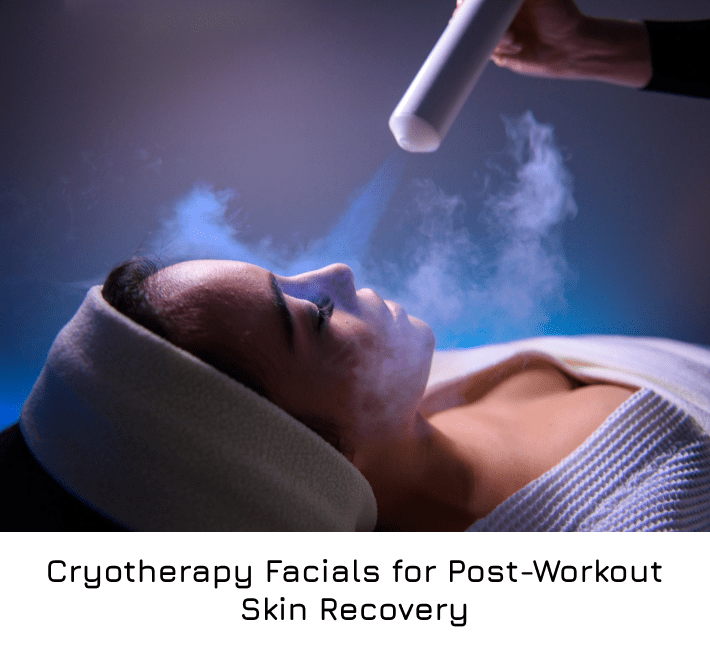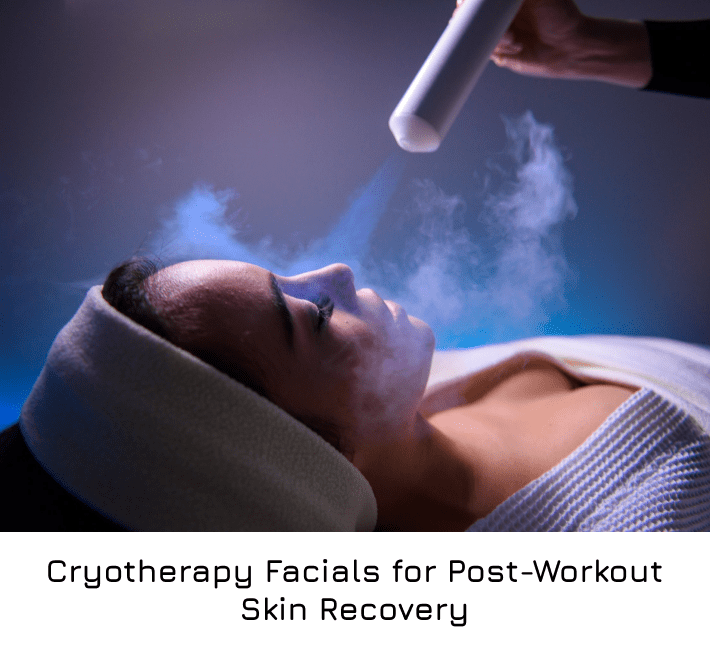Cryotherapy Facials

In recent years, cryotherapy has gained immense popularity as a holistic wellness trend, and its benefits are not limited to athletic recovery alone. One intriguing facet of cryotherapy is cryofacial therapy, which involves subjecting the face to extremely cold temperatures for a short duration. This innovative approach to skincare has become particularly popular in the fitness community as individuals seek effective ways to enhance post-workout recovery. In this article, we will delve into the concept of cryotherapy facials and explore how they contribute to post-exercise skin recovery.
Understanding Cryofacial Therapy
Cryo-facial therapy is a non-invasive skincare treatment that employs extremely cold temperatures to stimulate blood flow, tighten the skin, and reduce inflammation. During a cryofacial, liquid nitrogen or a controlled stream of cold air is used to expose the skin to temperatures as low as -160 degrees Celsius. The sudden cold exposure causes blood vessels to constrict, promoting improved circulation and triggering the production of collagen, a key protein responsible for skin elasticity.
Post-Workout Skin Recovery
The benefits of cryofacial therapy extend beyond the realm of skincare, making it an attractive option for individuals seeking efficient post-workout recovery. Here’s how cryotherapy facials can aid in the recovery process:
Reduced Inflammation: Intense physical activity can lead to inflammation, causing redness and swelling. Cryo facial therapy’s cold temperatures help alleviate inflammation by constricting blood vessels and reducing blood flow to the affected areas, resulting in a calmer complexion post-workout.
Enhanced Circulation: After exercise, blood circulation is crucial for delivering oxygen and nutrients to the skin cells. Cryo-facial therapy promotes vasoconstriction during the treatment, followed by vasodilation afterward, which can enhance blood flow, aid in the removal of metabolic waste products, and promote overall skin health.
Skin Tightening: The cold exposure during cryo-facial therapy stimulates collagen production, leading to improved skin elasticity. This can be particularly beneficial for individuals who engage in regular exercise and may experience a gradual loss of skin firmness over time.
Pore Minimization: Cryotherapy facials are known to temporarily tighten pores, providing a smoother appearance to the skin. This effect can be especially appealing to those looking to refine their complexion after sweating during a workout.
Conclusion
Cryo-facial therapy emerges as an intriguing option for post-workout skin recovery, offering a holistic approach to wellness that combines the benefits of cryotherapy with skincare. By reducing inflammation, enhancing circulation, tightening the skin, and minimizing pores, cryo-facial therapy aligns with the goals of individuals seeking efficient and rejuvenating recovery after physical activity.
As with any wellness trend, individuals need to consult with skincare professionals or healthcare providers before incorporating cryotherapy facials into their routine. While the benefits seem promising, personalized advice can ensure that cryofacial therapy complements an individual’s unique skin type and overall health goals. As the popularity of cryotherapy continues to grow, the integration of cryofacial therapy into post-workout skincare routines may become a staple for fitness enthusiasts seeking an extra layer of recovery and rejuvenation.
